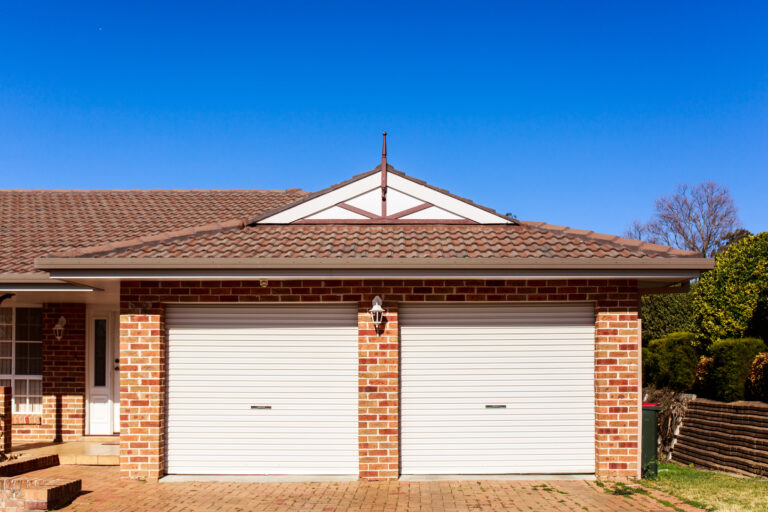Discovering a water stain on your ceiling can be alarming. These brown or yellowish marks aren’t just unsightly – they’re warning signs that demand attention. Whether caused by a leaking roof, plumbing issues, or condensation problems, ceiling water stains indicate potential threats to your home’s structural integrity
When left untreated, water stains on your ceiling can lead to serious complications. Beyond the visible discoloration, these stains often signal underlying issues that could result in structural damage, electrical hazards, or harmful mold growth. Quick identification and proper remediation of ceiling water stains are essential to protect your home and prevent costly repairs.
Key Takeaways
- A water stain on your ceiling often indicates deeper problems that require immediate professional attention.
- Identifying the source of a water leak quickly can prevent extensive damage to your ceiling’s affected layer and surrounding structure.
- Professional inspection of your heating appliance and HVAC systems can prevent many common causes of ceiling stains.
- Installing new ceiling tiles may be necessary if water damage has compromised the existing materials beyond repair.
- OnDemand Painters provides comprehensive solutions for ceiling stain removal and restoration, ensuring both cosmetic and structural issues are addressed.
- Regular maintenance and prompt attention to any signs of water damage can save thousands in potential repair costs.
Identifying Ceiling Water Stains
Water stains typically appear as yellowish or brownish discoloration on your ceiling. These stains often form in circular patterns with darker edges, though shapes can vary depending on the source of the leak. Fresh water stains may feel damp to the touch, while older ceiling water stains are usually dry but remain visible. The texture of the affected area might differ from the surrounding ceiling surface, and in some cases, you might notice subtle bulging or sagging in the ceiling material.
Common Causes of Water Stains
Understanding the various factors that lead to stains on your ceiling is crucial for proper diagnosis and repair. The source of water stains can range from obvious roof leaks to subtle condensation issues, and identifying the root cause determines the appropriate fix.
Roofing Problems
A leaking roof remains one of the most common causes of water stains. Traditional visual inspection often reveals problems with missing shingles or compromised flashing roof seals around chimneys. Most roofing issues begin small but progressively worsen, especially around areas where air vents and plumbing vents penetrate the roof surface. Over time, waterproofing layers can deteriorate, leading to more extensive water damage.
Internal System Issues
Your home’s internal systems create various pathways for water to reach your ceiling. An HVAC unit often causes problems when its drainage system fails or becomes blocked. Regular maintenance of these systems can prevent many issues before they start. Leaking pipes hidden within walls or above ceilings pose particular challenges, as they may cause significant damage before becoming apparent. Problems originating from an upstairs bathroom deserve special attention, as plumbing leaks in these areas can quickly lead to ceiling damage below.
Moisture and Condensation
Not all water stains result from direct leaks. Poor ventilation creates conditions where excessive moisture accumulates, especially in homes with inadequate airflow. This moisture problem often manifests as condensation on cold surfaces, particularly during seasonal temperature changes. Standing water in attic spaces can develop from various sources, creating ongoing issues that affect ceiling integrity. The relationship between temperature, humidity, and ventilation plays a crucial role in preventing these types of water stains.
The Importance of Quick Action
When homeowners spot ceiling water stains, immediate investigation becomes essential. A seemingly minor stain today could indicate a larger problem that, if ignored, might require extensive repairs later. While the temptation to simply cover water stains with paint exists, this approach only masks the symptom without addressing the underlying cause. Professional assessment can often reveal the full extent of the problem and prevent costly repairs down the line.
Early intervention makes a significant difference in both repair costs and the extent of necessary work. Water damage rarely resolves itself, and delaying repairs typically leads to more extensive problems, potentially affecting not just the ceiling but surrounding structural elements as well. Proper diagnosis and repair require understanding both the visible symptoms and the hidden causes of water stains.
Step-by-Step Guide to Fixing Water Stains
Safety First
Before beginning any ceiling repair work, ensure you’re properly equipped. Wear protective gloves and safety glasses to protect yourself from cleaning solutions and falling debris. Place a drop cloth on the floor beneath your work area to catch any drips or debris. Ensure the room has proper ventilation, especially when working with bleach solution or paint products.
Step 1: Assessment and Preparation
Confirm that the original water leak has been fixed before starting cosmetic repairs. A professional roof inspection may be necessary if you’re unsure about the leak’s source. Clean and clear the work area, ensuring good lighting to see the full extent of the stained area.
Step 2: Surface Cleaning
Mix one part bleach with three parts warm water in a spray bottle. Test this bleach solution on a small, inconspicuous area first. Gently clean the stained area with the solution, being careful not to oversaturate the ceiling. Allow the surface to dry completely before moving on – this typically takes several hours in a well-ventilated room.
Step 3: Primer Application
Apply a high-quality stain blocking primer to prevent water stains from bleeding through the final paint layer. Cover the entire affected area and extend slightly beyond the visible stain. The primed area should dry thoroughly according to manufacturer specifications, usually 24 hours for best results.
Step 4: Final Painting
Select ceiling paint that perfectly matches your existing ceiling color. For seamless results, consider painting the entire ceiling rather than just the affected part. Apply a first coat evenly using a roller with an extension handle. Once dry, assess whether a second coat is needed for complete coverage. This approach ensures no obvious patches remain visible.
Preventing Future Problems
Regular Maintenance
Schedule periodic visual inspections of your roof, particularly after severe weather events. Check your HVAC system quarterly for signs of condensation or leaks. Examine all plumbing vents and air vents annually. Keep gutters clean and properly aligned to prevent water from backing up under roofing materials.
Warning Signs to Watch For
Monitor your ceiling for any new discoloration or texture changes. Pay attention to musty odors that might indicate excessive moisture or early mold growth. Watch for signs of poor ventilation, such as condensation on windows or high indoor humidity levels.
Professional Help
When to Call the Experts
Seek professional assistance if you encounter:
- Extensive water damage affecting a large portion of the ceiling
- Signs of structural damage or sagging
- Multiple or recurring leaks
- Electrical wiring exposure
- Significant mold growth
- Complex repairs involving plumbing or HVAC systems
Conclusion
While fixing water stains might seem daunting, proper treatment is crucial for maintaining your home’s value and structural integrity. From addressing tough stains to dealing with a leaking roof, each step in the repair process requires attention to detail and the right approach. Whether you’re facing issues with wood ceiling repairs or need to replace ceiling tiles, professional help can make a significant difference.
If you’ve addressed the underlying cause of your water stain and confirmed there’s no structural damage, painting over the affected area can restore your ceiling’s appearance. However, proper preparation and the right materials are essential for lasting results. OnDemand Painters specializes in delivering quality paint jobs and understands the importance of addressing underlying issues before painting. Our experienced team can assess your ceiling’s condition and recommend the best approach for a beautiful, long-lasting finish. For a consultation about your ceiling water stain and painting needs, contact OnDemand Painters today.
FAQs
How serious is a water stain on the ceiling if it appears to be dry?
Even dry stains indicate past water intrusion that could reactivate or signal hidden damage requiring immediate attention.
Is it possible to cover up ceiling stains with paint?
Simply covering stains without addressing the underlying cause will lead to recurring damage and potentially more expensive repairs.
How much does professional ceiling repair typically cost?
Professional repairs range from $500-2,000 depending on the extent of damage, with additional costs if structural repairs are needed.
What causes brown rings to form around ceiling discoloration?
The rings appear as water damage dries in layers, with minerals and sediment collecting at the edges of each drying cycle.
How long should I wait after fixing a leak before repairing the damage?
Wait at least 48 hours after fixing the leak to ensure the affected area is completely dry before starting repairs.
Why do stains sometimes appear suddenly after years of no issues?
Sudden stains often result from gradual deterioration reaching a tipping point or seasonal changes affecting your roof or plumbing system.
Do you offer a free roof inspection when there’s a water stain on ceiling?
While OnDemand Painters doesn’t provide roof inspections, we’ll assess your ceiling stains and guide you to appropriate specialists if needed before proceeding with any painting work.



















